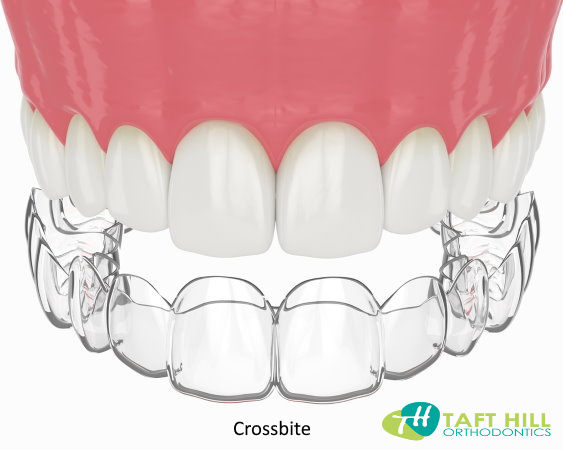What you need to know about crossbite
There’s a good chance that your child may develop a crossbite, which doesn’t usually go away as they become older. Front teeth may be affected, back teeth may also be affected, or both by the misalignment. If left untreated, this malocclusion could have serious implications. When the upper and lower jaws come together, occlusion is the term used to describe the way how the teeth fit together.
What Causes Crossbite? | Types of Cross bites | What issues do Crossbites cause? | How to Treat Crossbite Teeth | Crossbite Vs Underbite
What Causes Crossbite?
Having a crossbite happens when the upper jaw is too small and sits inside the lower jaw. It is possible for an orthodontist to treat a crossbite in a number of ways, all of which are possible. In addition to making eating difficult, this can make you self-conscious about your smile. Temporomandibular Joint Disorder (TMJ) is a possible complication and one of the more severe cases. TMD can cause headaches, jaw pain or discomfort, earaches, and jaw problems in the muscles that control jaw movement. It’s possible to find the main source of the problem and prevent TMD and other health related consequences at Taft Hill Orthodontics.

Types of Crossbites
A dental crossbite can be classified into 2 types—either anterior or posterior. An anterior crossbite occurs when the incisors are positioned within the lower jaw. A posterior crossbite affects the back of the jaw, which can cause pain and discomfort. Posterior crossbites impact 16% of children, whereas anterior crossbites harm just 4 to 5% of youngsters.
What Issues Do Crossbites Cause?
The most common reason for crossbite in children is genetics. In most instances, it is a genetic case that has a relation to the parents or other members of the close family. It’s not just the constant use of pacifier, improper chewing habits, nail biting, and thumb sucking—a common childhood habit—that causes crossbite; it can also be the delayed loss of primary teeth. It’s possible that this condition is exacerbated by having very large tonsils or adenoids. Dr. Timothy C. Hardy can take x-rays during your first consultation to determine the original cause of your crossbite and help advice on how to remedy it. Read about early tooth loss.
Effects of Cross bites:
Misaligned biting increases the risk of dental problems and bruxism. You might also experience health concerns, mental disorders, or other issues. Gum disease, tooth decay, and strain in the jaw muscles can all be caused by a misaligned bite, which can eventually lead to chronic jaw disorders and discomfort in the neck, shoulder, and back.
You must have a diagnosis as soon as possible for the correction of these type of conditions in order to prevent future oral and skeletal problems. To avoid the need for orthognathic surgery, this problem must be addressed before it worsens.
How To Treat Crossbite Teeth
The optimal time to address this form of malocclusion is when the person is a youngster or in their teens. Adults can, however, still receive treatments, even if the restorations are more time-consuming than it is for younger patients. It is recommended by the American Dental Association (ADA) that the dentist make sure there is enough room or space to shift the teeth in crossbite and that the bite can be expanded to facilitate the shift. During the course of treatment, the patient will also be required to wear an orthodontic appliance.
Maxillary Expander
Your orthodontist will place a device on the palate and put it to the top teeth. The maxillary expander gradually expands the upper palate using a unique key on the device. This gadget is best suited for kids who are still developing their palates.
Removable Expander
An adult can gradually increase the size of their upper palate with the help of expanders. Devices like these are worn every night until they achieve their intended results.
Braces Treatment
All kinds of bite abnormalities can be corrected with crossbite braces treatment, not simply crossbites. Fixed orthodontic appliances, such as metal braces brackets, are used to realign the adult teeth and jaw bone. A retainer is used after braces treatment to keep the teeth in their new tooth position. Crossbite fixed with invisalign is essentially a simple orthodontics process. Using this set of aligners, you’ll be able to have a proper alignment for your teeth. Treatment crossbite with clear braces is also one of the ways that’s less noticeable than other procedures.
Surgical Method
After the patient is fitted with a custom-made device, the surgeon will deliberately break the jaw bones in several places. A palate expander cannot provide the same degree of expansion as jaw surgery.
Crossbite Vs Underbite
Crossbites are when your teeth don’t line up properly when you close your mouth after you’ve eaten or spoken. A crossbite occurs when your upper teeth are wider than your lower teeth and sit on the outside of each other.
Lower teeth are separated away from upper teeth when there is an underbite. Class 3 malocclusion (jaw misalignment) is a common effect of this.
Experience the benefits of a new appearance! Make an appointment right now, or stop by and visit our office if you’re in the area. If you’d like to learn more info about our practice’s crossbite treatment costs, insurance carriers we take, or other treatment options for correcting this bite issue, such as cross bite fixed lingual braces and veneers for crossbite, feel free to give us a call at our office’s phone number. Expect prompt and reliable answers to your questions. Get to know our team of professional dentists and staff members today! More about overbite.

